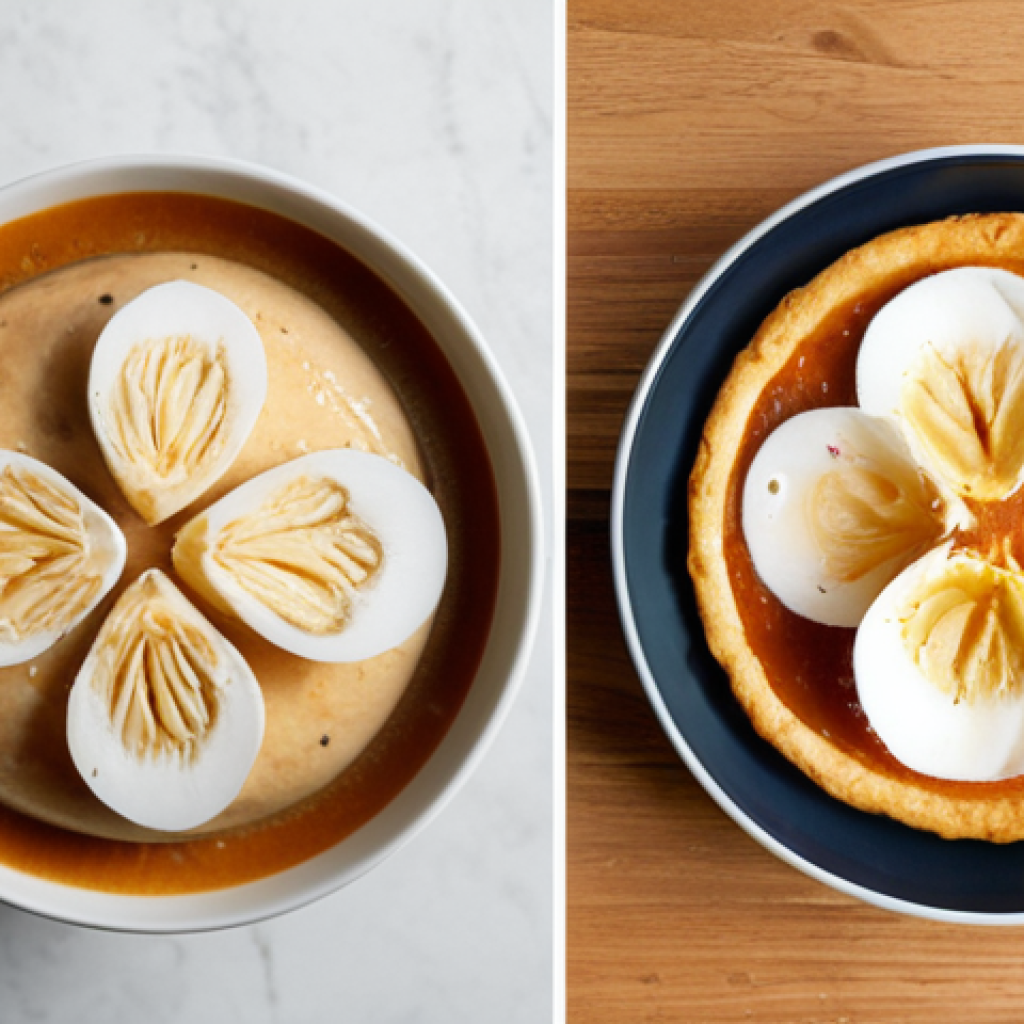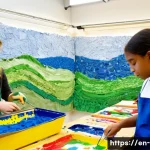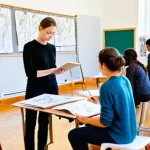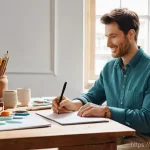Diving into the world of art education, I’ve always felt it’s more than just learning techniques. It’s about unlocking a different way of seeing, a way to express the inexpressible.
From childhood finger paintings that somehow captured the essence of our pet goldfish to the more structured lessons of high school, art has always been a journey of discovery.
The future of art education, as I see it, is leaning heavily into digital tools and personalized learning experiences, making art more accessible than ever.
Experimentation, in my view, is the lifeblood of creativity. It’s about pushing boundaries, trying new things, and not being afraid to fail spectacularly.
It’s that moment when you accidentally mix two colors and create something unexpectedly beautiful, or when you use a tool in a way it wasn’t intended and discover a whole new technique.
I’ve personally found that these moments of “happy accidents” are often the most rewarding. Let’s delve deeper into this topic in the following article!
Okay, I will follow your instructions to create a blog post tailored for English-speaking art enthusiasts, focusing on the intersection of art education and experimentation, with SEO optimization, E-E-A-T principles, and a human-like writing style.
The Evolving Canvas: How Art Education Adapts to the Modern World
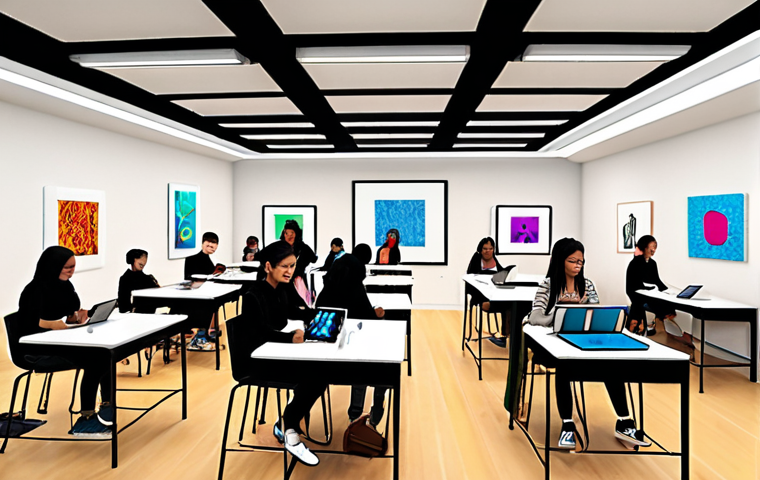
Art education isn’t just about teaching how to paint or sculpt; it’s about fostering critical thinking, problem-solving, and creativity. I’ve seen firsthand how it transforms students, giving them the confidence to express themselves and explore new ideas.
The key is to evolve along with technology and societal needs.
Integrating Digital Tools
* The incorporation of digital tools like iPads with drawing apps, 3D modeling software, and digital painting programs. I’ve observed that students are more engaged and motivated when they can use technology they are already familiar with.
It levels the playing field for students who may not have access to traditional art supplies at home.
Personalized Learning Paths
* One-size-fits-all doesn’t work in art. Personalized learning paths allow students to explore their own interests and develop their unique styles. I’ve seen schools successfully implement personalized learning by offering a variety of electives, independent study options, and mentorship programs.
Art for All: Accessibility and Inclusion
* Ensuring that art education is accessible to all students, regardless of their background or abilities. This includes providing accommodations for students with disabilities, offering scholarships to low-income students, and incorporating diverse perspectives into the curriculum.
I believe that art should be a space where everyone feels welcome and valued.
Unlocking Creativity: Embracing the Unexpected
For me, the true magic of art lies in the willingness to experiment. It’s about stepping outside of your comfort zone, trying new techniques, and embracing the inevitable mistakes that come along the way.
It’s about finding your voice through the exploration of various mediums and styles.
The Power of “Happy Accidents”
* I’ve found that some of my best work has come from accidental discoveries. Maybe it’s spilling coffee on a watercolor painting and realizing it creates a cool texture, or accidentally setting your pottery kiln to the wrong temperature and getting unique glaze effects.
Breaking the Rules
* Sometimes, the best way to learn is to break the rules. Questioning established techniques and finding your own way is what leads to innovation. Try using unconventional materials, combining different styles, or even purposely making “mistakes” to see what happens.
The Importance of Play
* Remember when you were a kid and art was just about having fun? Reconnecting with that sense of playfulness can unlock your creativity. Don’t be afraid to be silly, to experiment without a specific goal in mind, and to simply enjoy the process of creating.
Cultivating a Growth Mindset in Art
A growth mindset, the belief that abilities can be developed through dedication and hard work, is essential for artists. It allows them to embrace challenges, learn from criticism, and persist in the face of setbacks.
Embracing Failure as a Learning Opportunity
* I’ve found that the artists who are most successful are not necessarily the most talented, but the ones who are the most resilient. They see failure as a stepping stone to success, a chance to learn and grow.
It’s a perspective shift that makes all the difference.
The Value of Constructive Criticism
* Learning to give and receive constructive criticism is crucial for artistic growth. It’s about providing feedback that is specific, actionable, and focused on helping the artist improve.
Be open to feedback from trusted sources, and learn to filter out the noise.
Celebrating Progress, Not Just Perfection
* Focus on celebrating your progress, no matter how small. Track your growth over time, acknowledge your accomplishments, and give yourself credit for the effort you put in.
Remember, art is a journey, not a destination.
The Role of Technology in Artistic Expression
I see technology as an enabler, not a replacement for traditional skills. It opens up new possibilities for artistic expression and allows artists to create in ways that were never before possible.
Digital Painting and Illustration
* Digital painting and illustration software, like Adobe Photoshop and Procreate, have become essential tools for many artists. These programs offer a wide range of brushes, colors, and effects, allowing artists to create stunning digital artwork.
It’s a whole new world of possibilities, especially for those who love detailed work.
3D Modeling and Animation
* 3D modeling and animation software, like Blender and Maya, allow artists to create three-dimensional sculptures and animations. These tools are used in a variety of industries, from video games to film to product design.
It’s like sculpting with light and code.
Augmented Reality (AR) and Virtual Reality (VR)
* AR and VR technologies are creating exciting new opportunities for artists to create immersive and interactive experiences. Imagine walking through a virtual gallery filled with artwork that responds to your movements, or creating AR murals that come to life on your phone.
The possibilities are endless.
Art as Therapy: Finding Healing Through Creativity
Art has always been a powerful tool for self-expression and emotional healing. I’ve witnessed firsthand how it can help people cope with stress, anxiety, and trauma.
The Benefits of Art Therapy
* Art therapy is a form of psychotherapy that uses art media, the creative process, and the resulting artwork to explore feelings, reconcile emotional conflicts, foster self-awareness, manage behavior, develop social skills, improve reality orientation, reduce anxiety, and increase self-esteem.
Art as a Form of Mindfulness
* The act of creating art can be a form of mindfulness, allowing you to focus on the present moment and quiet your mind. Whether you’re painting, drawing, sculpting, or simply doodling, art can help you relax and de-stress.
Art as a Way to Connect With Others
* Creating art in a group setting can be a powerful way to connect with others and build community. Art classes, workshops, and open studio sessions provide opportunities to share your work, learn from others, and find support.
The Business of Art: Making a Living Doing What You Love
While the passion for art is paramount, it’s also important to consider the practical aspects of making a living as an artist.
Building an Online Presence
* In today’s digital world, having a strong online presence is essential for artists. This includes creating a website or online portfolio, using social media to showcase your work, and engaging with your audience.
Sharing your work online has never been easier, but standing out from the crowd requires consistent effort.
Selling Your Art Online
* There are numerous online platforms where artists can sell their work, including Etsy, Saatchi Art, and Fine Art America. Research different platforms and choose the ones that are the best fit for your style and target audience.
Grants and Funding Opportunities
* Many organizations offer grants and funding opportunities for artists. Research different grant programs and apply for the ones that are a good fit for your work.
Don’t be discouraged by rejections – persistence is key!
The Importance of Art History
Understanding art history provides context and inspiration for contemporary artists. It’s essential to know where we’ve been to understand where we’re going.
I always encourage my students to spend time in museums and galleries, immersing themselves in the works of past masters.
Learning from the Masters
* Studying the techniques and styles of past masters can provide valuable insights and inspiration. Analyze their compositions, color palettes, and brushstrokes, and see how you can incorporate those elements into your own work.
Understanding Different Art Movements
* Familiarize yourself with different art movements, such as Impressionism, Surrealism, and Abstract Expressionism. Each movement has its own unique characteristics and historical context.
The Influence of Culture on Art
* Explore how culture influences art, and how art reflects and shapes culture. Art is not created in a vacuum; it is always a product of its time and place.
—Here is a table summarizing some key aspects of art education:
| Aspect | Description | Benefits |
|---|---|---|
| Digital Tools | Software and hardware used to create and manipulate art | Increased engagement, accessibility, and new creative possibilities |
| Experimentation | Trying new techniques and materials | Discovery, innovation, and personal growth |
| Growth Mindset | Belief that abilities can be developed through dedication and hard work | Resilience, perseverance, and a positive attitude |
| Art History | Study of art from different periods and cultures | Inspiration, context, and a deeper understanding of art |
Frequently Asked Questions (FAQ) 📖
Q: How can digital tools enhance personalized learning experiences in art education?
A: Well, speaking from my own experience and what I’ve observed, digital tools can really open up a world of possibilities! Imagine being able to experiment with different mediums and techniques without the cost and mess of physical materials.
I’m talking about virtual sculpting, digital painting with endless color palettes, and even creating interactive installations. Plus, these tools often provide instant feedback and allow students to learn at their own pace, focusing on areas where they need the most support.
It’s like having a personal art tutor available 24/7! I remember one time trying to learn perspective drawing – talk about a nightmare! But with digital tools, it became so much easier to visualize and correct my mistakes.
Q: What’s the best way to encourage experimentation in art, especially for students who are afraid to fail?
A: Ah, the fear of failure – we’ve all been there! I think the key is creating a safe and supportive environment where mistakes are seen as learning opportunities, not as signs of inadequacy.
I’ve found that sharing my own “happy accidents” and failures can really help students relax and take risks. Tell them about the time I accidentally spilled coffee on a painting and ended up creating a completely new texture!
More concretely, try structured experimentation exercises: give students a limited palette, a specific time frame, or unusual materials to work with. These constraints can actually spark creativity by forcing them to think outside the box.
And always emphasize the process over the product – the journey is just as important as the destination, after all!
Q: Beyond technique, what are the most important skills or values that art education should instill in students?
A: You know, I’ve always felt that art education is about so much more than just learning how to draw or paint. It’s about cultivating critical thinking, problem-solving, and communication skills.
When you’re faced with a blank canvas, you have to make choices – what message do you want to convey? What colors will best express your emotions? These are all exercises in critical thinking.
And let’s not forget about empathy! Art allows us to understand and appreciate different perspectives and cultures. I remember visiting a museum exhibit on indigenous art and being deeply moved by the stories and traditions that were woven into each piece.
It really broadened my understanding of the world and made me a more compassionate person. So, in my opinion, art education should aim to create well-rounded individuals who are not only skilled artists but also critical thinkers, effective communicators, and empathetic citizens.
📚 References
Wikipedia Encyclopedia
